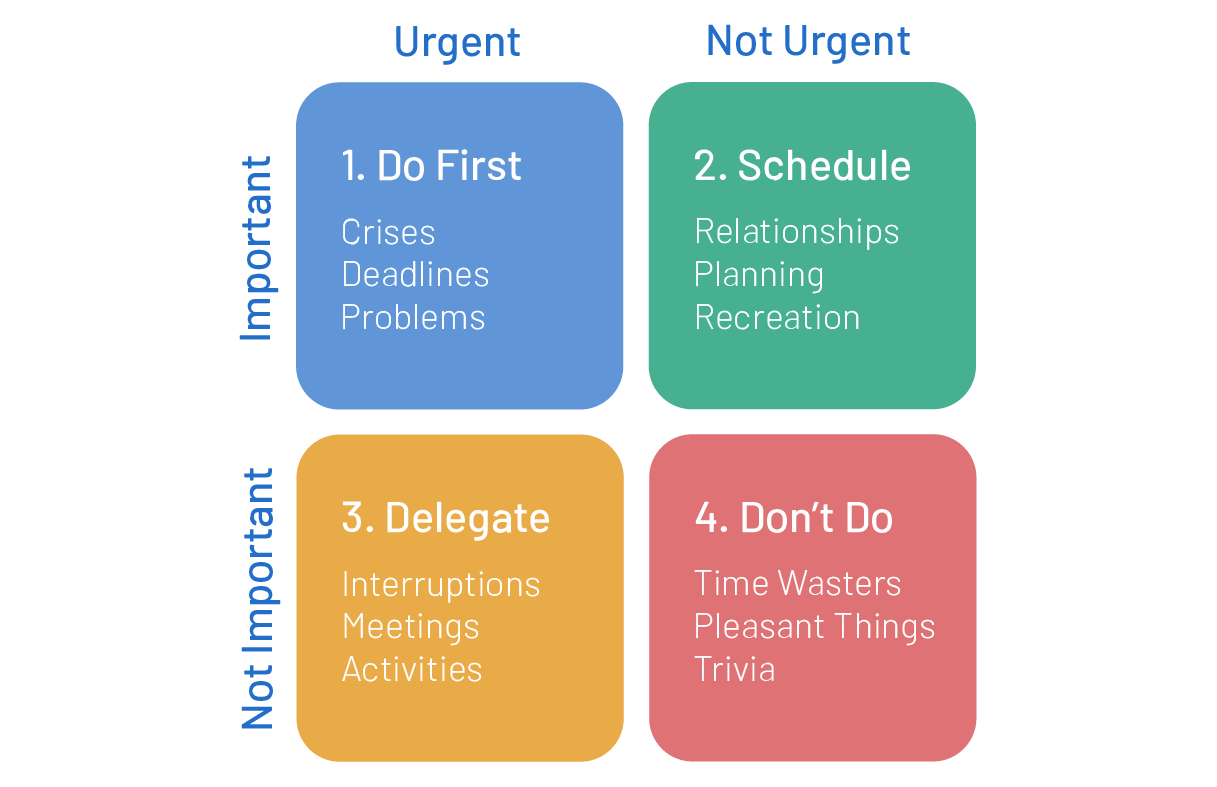
Task prioritization
In today’s fast-paced world, it’s easy to feel overwhelmed by the sheer volume of tasks constantly vying for our attention. Emails pile up, deadlines loom, and it can feel like we’re constantly spinning our wheels without making any real progress. This is where effective task prioritization comes in. By strategically deciding which tasks are most important and tackling them first, we can increase our productivity, reduce stress, and ultimately achieve our goals more efficiently.
The Eisenhower Matrix: Urgent vs. Important
One of the most popular frameworks for prioritizing tasks is the Eisenhower Matrix, also known as the Urgent-Important Matrix. This simple yet powerful tool helps you categorize tasks based on two key criteria:
Urgency: How quickly does this task need to be completed?

This leads to four quadrants:
Quadrant 1: Urgent & Important: These are true emergencies that require immediate attention. Examples include:
How to use the Eisenhower Matrix:
![How to Prioritize Tasks in Steps to Get Work Done [202] • Asana How to Prioritize Tasks in Steps to Get Work Done [202] • Asana](https://assets.asana.biz/transform/9240669c-e79d-4958-ba5b-a5f0f85de888/article-productivity-how-to-prioritize-tasks-2x)
1. List all your tasks: Write down all the tasks you need to accomplish.
2. Categorize each task: Place each task into one of the four quadrants.
3. Prioritize and act:
The Pareto Principle (The 80/20 Rule)
The Pareto Principle, also known as the 80/20 Rule, states that 80% of your results come from 20% of your efforts. In the context of task prioritization, this means that identifying and focusing on the 20% of tasks that will yield the greatest impact will significantly increase your overall productivity.
How to apply the Pareto Principle:
1. Identify your most important tasks: Determine which 20% of your tasks will have the biggest impact on your goals.
2. Focus your efforts: Concentrate your energy and resources on these high-impact tasks.
3. Delegate or eliminate: Delegate or eliminate the remaining 80% of tasks that have minimal impact.
The ABCDE Method
The ABCDE Method is a simple yet effective system for prioritizing tasks based on their importance.
A: Must-do tasks. These are critical tasks that have significant consequences if not completed.
How to use the ABCDE Method:
1. Assign priorities: Assign A, B, C, D, or E to each task.
2. Focus on A tasks: Start with the A tasks and work your way down the list.
3. Delegate or eliminate: Delegate D tasks and eliminate E tasks.
The MoSCoW Method
The MoSCoW Method is a prioritization technique used in project management, but it can also be effectively applied to individual task lists.
Must have: Essential features or tasks that must be included in the project.
How to use the MoSCoW Method:
1. Categorize tasks: Categorize each task as Must have, Should have, Could have, or Won’t have.
2. Focus on Must have tasks: Prioritize and focus on the Must have tasks.
3. Address other categories: Address Should have and Could have tasks based on time and resources.
4. Eliminate Won’t have tasks: Remove Won’t have tasks from your project scope.
Tips for Effective Task Prioritization
Plan your day: Start each day by reviewing your to-do list and prioritizing your tasks.
Conclusion
Effective task prioritization is a crucial skill for anyone who wants to increase their productivity, reduce stress, and achieve their goals. By strategically deciding which tasks are most important and tackling them first, you can make the most of your time and energy. Whether you use the Eisenhower Matrix, the Pareto Principle, the ABCDE Method, the MoSCoW Method, or a combination of techniques, the key is to find a system that works for you and consistently apply it to your daily routine. By mastering the art of task prioritization, you can unlock your full potential and achieve greater success in all areas of your life.